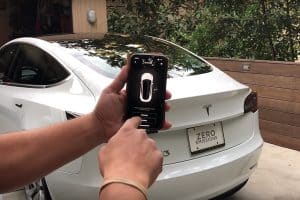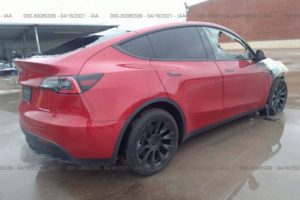Key Points
- 💾 Tesla is increasing its orders for Dojo D1 supercomputer chips designed for AI applications.
- 📈 Tesla plans to double its Dojo D1 chip orders from Taiwan Semiconductor Manufacturing Company (TSMC) to 10,000 units for the coming year.
- 🚀 Expectations are high that Tesla’s demand for Dojo D1 chips will continue to grow until 2025, given Dojo’s scalability.
- 🤖 Tesla’s Dojo supercomputer is crucial for training driver-assist systems and self-driving AI models, enhancing the company’s operations.
- 💼 Tesla’s partnership with TSMC for D1 chip orders is reportedly boosting TSMC’s high-performance computing (HPC) business.
- 🖥️ Tesla’s Dojo supercomputer aims to reduce the company’s reliance on Nvidia GPUs, potentially impacting its AI capabilities.
- 🌐 Tesla has ambitious goals for Dojo, aiming to rank among the top five supercomputers globally by January 2024 and achieve 100 exa-flops of compute by October 2024.
Tesla is reportedly increasing the orders for its Dojo D1 supercomputer chips. The D1 is a custom Tesla application-specific integrated circuit (ASIC) that’s designed for the Dojo supercomputer, and it is reportedly ordered from Taiwan Semiconductor Manufacturing Company (TSMC).
Citing a source reportedly familiar with the matter, Taiwanese publication Economic Daily noted that Tesla will be doubling its Dojo D1 chip to 10,000 units for the coming year. Considering the Dojo supercomputer’s scalability, expectations are high that the volume of D1 chip orders from TSMC will continue to increase until 2025.
Dojo, after all, is expected to be used by Tesla for the training of its driver-assist systems and self-driving AI models. With the rollout of projects like FSD, the dedicated robotaxi, and Optimus, Dojo’s contributions to the company’s operations would likely be more substantial.
Interestingly enough, the Economic Daily noted that Tesla’s D1 chip orders from TSMC are also helping the chipmaker. As per the publication, TSMC’s HPC-related order momentum has increased thanks to its deal with Tesla. While neither Tesla nor TSMC have commented on the matter, the publication noted that the two companies’ business relationship has become a bit of an open secret in the industry.
With Dojo coming into the picture, Tesla may be able to reduce its dependency on Nvidia’s offerings. Tesla is a large consumer of Nvidia GPUs, with reports suggesting that Tesla was due to switch on a new supercomputer with 10,000 Nvidia H100 GPUs late last month. The system is estimated to cost about $300 million, and it will be used for various artificial intelligence applications.
Posts from Tesla AI’s official account on X also hint at some ambitious targets for Dojo. As per the automaker, Dojo started its production in July 2022, and by January 2024, the supercomputer is projected to become one of the top five in the world. By October 2024, Tesla’s Dojo supercomputer is projected to feature 100 exa-flops of compute.





